Years ago, while doing a series of stories on Yellowstone National Park for my job as an editor/reporter for the Idaho State Journal, I saw my first Yellowstone lake trout. It came from the depths of a deep freeze housed by the National Park Service near Lake Village, and when the park biologist pulled it from the big, white industrial-sized behemoth, I was shocked.
The fish took two hands to hold, and likely stretched the tape well beyond the 30-inch mark.
I looked at my photographer who was with me for the day in the park and said something like, “No wonder everybody is so worried.”
About a decade earlier, the first lake trout to be officially reported in Yellowstone Lake caused quite the stir. It was a head-scratcher. How had this fish—native to the upper Midwest and the boreal latitudes of Canada and Alaska—ended up in Yellowstone Lake?
Conspiracy theories abounded. An illegal introduction could be the culprit, the Park Service said at the time. Some bucket biologist decide he or she wanted to catch giant lake trout in Yellowstone Lake, and released fish likely caught from either Lewis Lake or Shoshone Lake into Yellowstone Lake (lake trout were stocked into Lewis and Shoshone lakes about a century earlier). Never mind the consequences to the lake’s native Yellowstone cutthroat trout.
Later, other theories surfaced. Perhaps the fish ended up in the lake during the massive effort to fight the 1988 wildfires that torched much of the park. Helicopter tankers could have inadvertently picked up lake trout in Shoshone Lake or Lewis Lake and spilled them into Yellowstone Lake, or even just a tributary to the lake.
More recently, it’s been discovered that lake trout could, conceivably, make the trip from Jackson Lake, far to the south of Yellowstone Lake via Two Ocean Pass, where Atlantic and Pacific-destined creeks start from the same general water source. Lake trout could conceivably swim from the Snake River (after washing through the dam at Jackson Lake) up Pacific Creek and connect to the upper reaches of the Yellowstone River drainage and eventually end up in Yellowstone Lake.
In the end, it doesn’t really matter. Lake trout had found their way into perhaps the last big-water habitat where genetically pure Yellowstone cutthroat trout live. Within 16 years of that first discovery, Yellowstone Lake’s native cutthroats were on the verge of extinction—some 90 percent of the lake’s spawning cutthroat trout were gone.
Consider that a mature lake trout can eat as many as 40 Yellowstone cutthroat trout in a single year. Now consider that, since that 1994 discovery, the National Park Service has killed 3.4 million lake trout in Yellowstone Lake. That’s some daunting math that spelled doom for the lake’s native trout.
But, in recent years, the effort to take out as many lake trout as possible has made some progress. This past summer, the Park Service reports, gillnetters on the lake captured and killed more than 280,000 lake trout. In 2018, that number was just shy of 300,000. In 2017, the Park Service corralled 397,000 fish.
The decline in catch, according to the Park Service, means the gillnetters are having to fish harder to find their target fish. The effort to knock back lake trout in Yellowstone Lake is working.
“I want to personally thank the National Park Service team, our partners, and the many people who have philanthropically supported this continuing conservation effort,” said Yellowstone National Park Superintendent Cam Sholly. “There is a considerable amount of work yet to do to build on this progress. This will continue to be one of our conservation priorities.”
Lake trout removal in Yellowstone hasn’t been cheap. The effort has cost more than $20 million, with much of that funding coming from those philanthropic groups that Sholly mentioned above. Yellowstone Forever (formerly the Yellowstone Park Foundation) is easily the largest funder of the effort, but groups like the Greater Yellowstone Coalition have contributed, too.
Trout Unlimited volunteers from all across the country raised money to pay for telemetry equipment that helps the Park Service’s contracted gillnetters find where lake trout are likely to be at any given time during the summer netting season. By implanting “Judas” fish with transmitters that ping when the fish swim past telemetry sites, the Park Service has been able to determine migration patterns of lake trout in Yellowstone Lake. Perhaps more importantly, telemetry has helped biologists determine where lake trout are spawning in the fall.
Over the last few spawning seasons, the Park Service has been smothering known lake trout spawning redds with plant-based pellets that degrade atop fertilized lake trout eggs, robbing the water and the eggs of the oxygen they need to survive. It takes about two days for the plant matter to kill the eggs. With promising results, this effort will be expanded over spawning redds throughout the lake, the Park Service reports.
Though it is likely that lake trout will never be completely eradicated from Yellowstone lake. Still, as a result of the lake-trout eradication efforts, native cutthroat trout are on the rebound. Spawning fish are returning to Yellowstone Lake tributaries, where they’re being targeted once again by grizzly bears, otters and eagles. In time, it’s reasonable to expect that ospreys will return to Yellowstone Lake—they all but disappeared during the peak of the cutthroat crash.
The decline of cutthroat trout rippled through the park’s complex ecosystem. At the peak of the decline, grizzly bears that were conditioned to fish for migrating trout in the spring switched over to a diet that focused largely on young-of-the-year elk and moose. Bald eagles started going after swan cygnets. As noted, the few remaining osprey that nested on the lake had to fly five miles or more to neighboring drainages just to find food.
Lake trout live deep, only coming into shallow water to spawn in the fall, and again in the spring to feed as the ice goes out on the lake. They are not a dependable source of food for park predators, so it’s easy to see how the impact of the cutthroat trout decline spread throughout the region.
But things are slowly returning to normal.
That said, a panel of fisheries experts determined in May 2019 that it will take at least five more years of netting to achieve the goal of fewer than 100,000 lake trout in Yellowstone Lake.
As Dr. Todd Koel, leader of Yellowstone’s Native Conservation Program, notes, “The park will never completely eradicate lake trout, but the return on investment is the ecological restoration of Yellowstone cutthroat trout, sustainable angling and a chance to glimpse a river otter, osprey, or bear catching a cutthroat.”



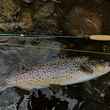

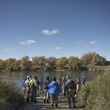

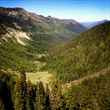



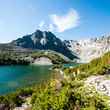
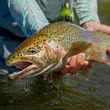

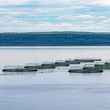
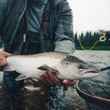
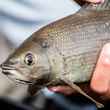
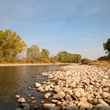



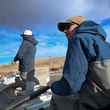
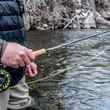

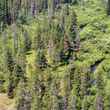

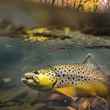


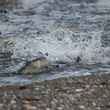
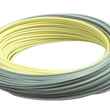
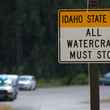
Comments
John O'Brien replied on Permalink
Sell me 12 frozen Yellowstone Lake Trout filets. Catch and Eat
Pages